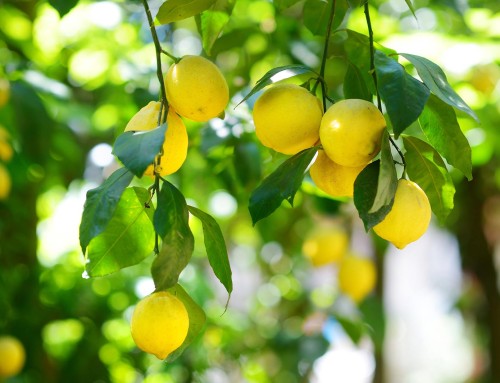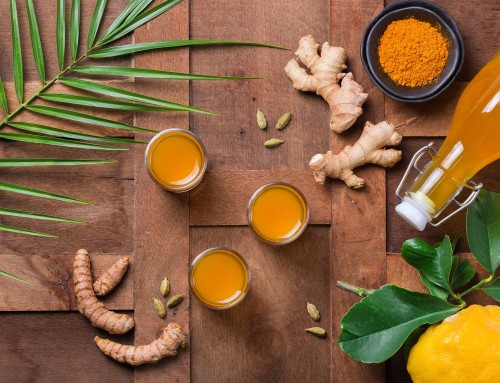Understanding the 5 Subdoshas of Vata

One of the fundamental principles of Ayurveda is that there are three different dosha (mind-body) characteristics and that you are a unique combination of each:
- breezy, enthusiastic Vata
- fiery impassioned Pitta
- earthy, easygoing Kapha
But did you know that each dosha contains five distinct subdoshas that govern specific parts of the body and their functioning? In this article, we’ll focus on the subdoshas of Vata.
“Vata dosha is often known as the ‘king dosha’ in our physiology,” explains Dinesh Gyawali, PhD, a classically trained Ayurveda Vaidya (Ayurvedic expert) and Assistant Professor at Maharishi University of Management. “Vata is composed of air and space, and it’s responsible for movement, action, transportation, inspiration, and enthusiasm. It really governs our whole physiology. Without Vata, the other two doshas literally can’t move.”
Wherever Vata goes, Pitta and Kapha follow—which is why it’s so important to keep Vata and its subdoshas balanced.

1.Prana Vata
Prana Vata governs the brain, head, lungs, and heart
Gyawali says. “It’s responsible for sensory perception, inhalation, heartbeat, ingestion of food, coughing, spitting—all these types of movement—and even happiness and joy. It governs the mind-heart connection.”
Stress and a lack of sleep can throw Prana Vata out of balance, which can result in weakened senses, confusion, nausea, and other issues. Things like meditation, yoga, and pranayama (Ayurvedic breathing exercises) are very helpful in restoring balance to Prana Vata. Herbs and herbal formulas that support the function of the central nervous system are helpful, too, says Gyawali, listing Youthful Mind (MA3) tablets, Peace of Mind tablets (MA1401) , Take it Easy Tea, and Peace of Mind Aroma Oil among his go-to recommendations.

2. Udana Vata
According to Gyawali, Udana Vata mainly governs the chest region
Says Gyawali. “It moves upward from the navel toward the heart, lungs, throat, and even the brain,” he says. “It energizes the mind and awakens energy. It has a lot to do with our lungs, the respiratory system, and speech. Breathing—especially exhaling—is basically a function of Udana Vata.”
He goes on to explain that, when balanced, Udana gives strength to the body and also a glow to the skin. But exposure to the cold can cause it to fall out of balance, along with eating too many foods that are raw, dry, rough, cold, bitter, or light. The signs of an imbalanced Udana Vata include breathing issues, tightness in the chest, occasional congestion, hoarseness, throat discomfort, stuttering, indecisiveness, and/or the inability to express oneself properly.
The breathing techniques of pranayama are especially helpful in balancing Udana Vata, explains Gyawali. He also recommends meditation, yoga, and Chyavanprash—“the formula of choice for respiratory support.” Chyavanprash is a powerful respiratory tonic comprised of Ayurvedic herbs, unheated honey, and ghee (clarified butter). Other helpful Ayurvedic formulae include, Cold Season Defence (MA1404), Breathe Easy tablets (MA1405), Allergard (MA1788), Nasal Drops (MA735), Vata Balance Aroma Oil, and Kapha Balance Aroma Oil.

3. Vyana Vata
Vyana Vata regulates circulation and the heart
Says Gyawali. “It also represents consciousness, because the heart is the seat of consciousness and unconditional love,” he explains. “Vyana Vata circulates all rakta dhatu (blood) throughout the body, and it controls the emotions, nerve impulses, sensory motors, and muscular contraction and relaxation.”
Vyana Vata moves from the centre of the body (the heart) to the periphery (every other part of the body) and back. When out of balance Vyana Vata can express itself in blood pressure issues, tremors, anxiousness, palpitations, increased or decreased heart rate, and muscle cramping.
Meditation, yoga, and pranayama are very nourishing for Vyana Vata (and all of Vata’s subdoshas), according to Gyawali. He adds: “In terms of Ayurvedic formulas, it’s also helpful to give something that is nurturing to your heart and which promotes circulation. Abhyanga [daily warm oil massage] is excellent for that, especially with Rejuvenation Massage Oil for Women and for Men or dosha-specific oils (Vata, Pitta and Kapha Massage Oils). Even dry massage, or garshana, is very good for Vyana Vata imbalances. Ayurvedic herbs like Arjuna or Organic Guggul are good for the heart and healthy circulation, along with Rasayana for Women (MA3347) and Rasayana for Men (MA631).” Synergistic formulas like Cardio Support (MA1816) and Stress Free Emotions (MA1694) are also beneficial.

4. Apana Vata
The colon represents the seat of Vata dosha – especially Apana Vata
According to Gyawali. “Vata is all about space and air,” he says. “Apana Vata also governs the entire pelvic cavity region, the reproductive organs, uterus, urinary tract, and bladder. When in balance, Apana Vata moves downward. It strengthens intestinal walls and helps with peristalsis (the involuntary constriction and relaxation of the muscles of the intestine or other canals, creating wavelike movements that move the contents), elimination, and urination. It maintains the muscle tissue in the pelvis and it governs urine, faeces, ejaculation of semen, conception, menstruation, the act of childbirth, and so on. All those things below the navel have to do with Apana Vata.”
When Apana Vata becomes imbalanced, you can imagine what might ensue: occasional constipation, diarrhoea, overactive bladder, menstrual issues, and so on. Gyawali says that eating sesame oil—especially Black Sesame oil—is very soothing for Apana Vata. [Note: The sesame oil supplied by Maharishi Ayurveda Products in UK is for external use only. You can find organic, food-grade sesame oil in your local grocery store, or black sesame oil in specialty stores.] He also recommends the basti treatments (herbalized enemas) given during Panchakarma (a traditional Ayurvedic cleanse offered at Ayurvedic clinics at The Panchakarma Centre in Skelmersdale and the Maharishi AyurVeda Health Centre, Rendlesham. Helpful herbal formulas include Triphala with Rose (MA505), and Herbal Digest (MA927).

5. Samana Vata
Samana Vata governs the digestive organs and the area below the chest and above the navel
According to Gyawali. “The stomach, the small and large intestines, the liver, pancreas, and digestive organs are all governed by Samana Vata,” he says. “It represents agni [digestive fire]. It is responsible for not only digesting, but also separating, the nutrients from our digestive tract. Samana Vata separates what is to be absorbed and what is to be excreted, and it’s therefore vital for the whole digestive system.”
When Samana Vata becomes imbalanced, it can manifest in digestive imbalances like indigestion, malabsorption, diarrhoea, occasional constipation, gas or bloating, and leaky gut. Gyawali recommends different types of herbs and spices for different expressions of imbalanced Samana Vata.
“If someone has a tendency to slow digestion, ginger could help,” he says. “If someone has more tendency to excess gas production, it could help to eat cumin, coriander, and ajwain (found in our Vata Aromatic Seasoning). Generally speaking, Ayurvedic herbal formulas from Herbal Aci-Balance (MA575) to Herbal Digest (MA927) can all be helpful, along with Pitta Mild Seasoning, and Kapha Spicy Seasoning”.

Are Your Vata Subdoshas in Balance?
As with all things in Ayurveda, there is no one-size-fits-all approach to diet and herbal formulas, which is why Gyawali recommends seeing an Ayurvedic practitioner for a wellness consultation.
“They can help you with pulse assessment and other measures that help determine your level of balance,” he says. “The subdoshas definitely represent much more than our body alone, especially with Vata. Without bringing Vata into balance, it’s difficult for other issues to be addressed. This is why we call Vata the king dosha—it really is very important.”
by vpk by Maharishi Ayurveda on November 30, 2018.
Dinesh Gyawali, PhD

Assistant Professor, Department of Physiology and Health. Ayurvedic physician, Integrative Wellness Center. Maharishi University of Management, Fairfield, Iowa-52557, USA.
A classically trained Ayurvedic physician from Nepal, spreading wisdom of Ayurveda and healing people since 2001. “Being a parent, I understand the challenges of living in the modern world and the growing interest towards natural medicine. My PhD research was a groundbreaking work in establishing Ayurveda as an ‘evidence based practice’. I am dedicated to promote happier and healthier lifestyle through Ayurveda.”
DISCLAIMER: The information in this document is presented for the sole purpose of imparting education on Maharishi AyurVeda and neither the information nor the products are intended to diagnose, treat, mitigate, cure or prevent any disease. If you have a medical condition, or are pregnant or lactating, please consult a health professional and it is recommended that you speak with your physician before making significant changes to your diet or routine.





